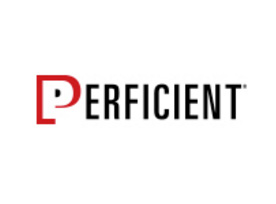Recently I completed upgrading a client’s IBM Cognos environment – both TM1 and BI. It was a “jump” from Cognos 8 to version 10.2, and TM1 9.5 to version 10.2.2. In this environment, we had multiple virtual servers (Cognos lives on one, TM1 on one and the third is the gateway/webserver). Once the software was […]
Posts Tagged ‘Integration’
Preparing to Integrate Your Data with Salesforce
Without exception, every Salesforce project I’ve managed over the past several years has involved some data integration. Integration is the name of the game: providing more efficient, streamlined processes and better customer insight. This can translate into lower costs and higher sales so its well worth the investment. However, the majority of these projects experienced […]
Integrating IBM Digital Experience and Microsoft SharePoint
Jason Cornell spoke at the IBM Digital Experience Conference about how well IBM Digital Experience software integrates with SharePoint. When IBM talks about integration with SharePoint, its usually how to display SharePoint content or apps within WebSphere Portal. There are a bunch of ways that IBM has enabled out-of-the-box integration with SharePoint: IBM has Web […]
Master Data and Integration Tools
In today’s business world, the major challenge that enterprises face is to have one source of business data (Master Data) which is non-redundant, more consistent, accurate, complete and error free. Master data of an enterprise could be information about its customers, products, employees, suppliers, business locations, etc. Master data plays an important role in making […]
Perficient takes Cognos TM1 to the Cloud
IBM Cognos TM1 is well-known as the planning, analysis, and forecasting software that delivers flexible solutions to address requirements across an enterprise, as well as provide real-time analytics, reporting, and what-if scenario modeling and Perficient is well-known for delivering expertly designed TM1 based solutions. Analytic Projects Perhaps phase zero of a typical analytics project would […]
Are Portals Really Dead?
So lately I’ve been seeing a new class of web site that leans more towards custom development than a horizontal portal. The factors influencing a custom development approach mainly fall into the proliferation of Web/RESTful services and better front end tooling in AngularJS, Bootstrap, and similar items. Both Forrester and Gartner have labeled horizontal […]
Exercising IBM Cognos Framework Manager
In Framework Manager, an expression is any combination of operators, constants, functions, and other components that evaluates to a single value. You can build expressions to create calculation and filter definitions. A calculation is an expression that you use to create a new value from existing values contained within a data item. A filter is […]
Framework Manager – Creating a Parameter Map
A session parameter is a variable that IBM Cognos Framework Manager associates with a particular session. Examples include (current user name, current active language, current date and time, and others). Parameter maps are a method for substituting different values with different keys. A parameter map can be thought of as simple data “look-up table”. Each […]
Creating Business Logic – in Cognos Framework Manager
One of the goals of the Cognos Framework Manager modeler is to build a model that makes report authoring easier. To accomplish that, you “build in” business logic” (a loosely defined term here) into your meta model. This business logic can be simple (like simply renaming or hiding a database table column) or quite complex […]
Cognos Framework Manager, Transformer & Metric Designer
During a recent project of mine, I jumped “head first” into IBM Cognos Framework Manager. Yes, it is an awesome tool, but where exactly does it “fit” into the Cognos environment? Are there similar or alternate tools that can be used? I just had to have a quick look! The Cognos Components […]
IBM Cognos Framework Manager – Proven Practice
A proven practice for Framework Manager Meta Modeling is to divide your model into a series of layers, each layer having a specific purpose. (Originally IBM recommended the use of two layers (data and modeling), but later added a presentation layer, and (optionally) a separate dimensional layer). The layers should be: The top layer – […]
Flexible Meta Models and IBM Cognos Framework Manager
A metadata model is “a gathering of Meta information that includes both physical information and business information for one or more datasources and is the foundation for both future modelling and report development within an organization”. Meta-model flexibility can be defined as the ability of a (Meta) model to: Easily expand and grow (to support […]
